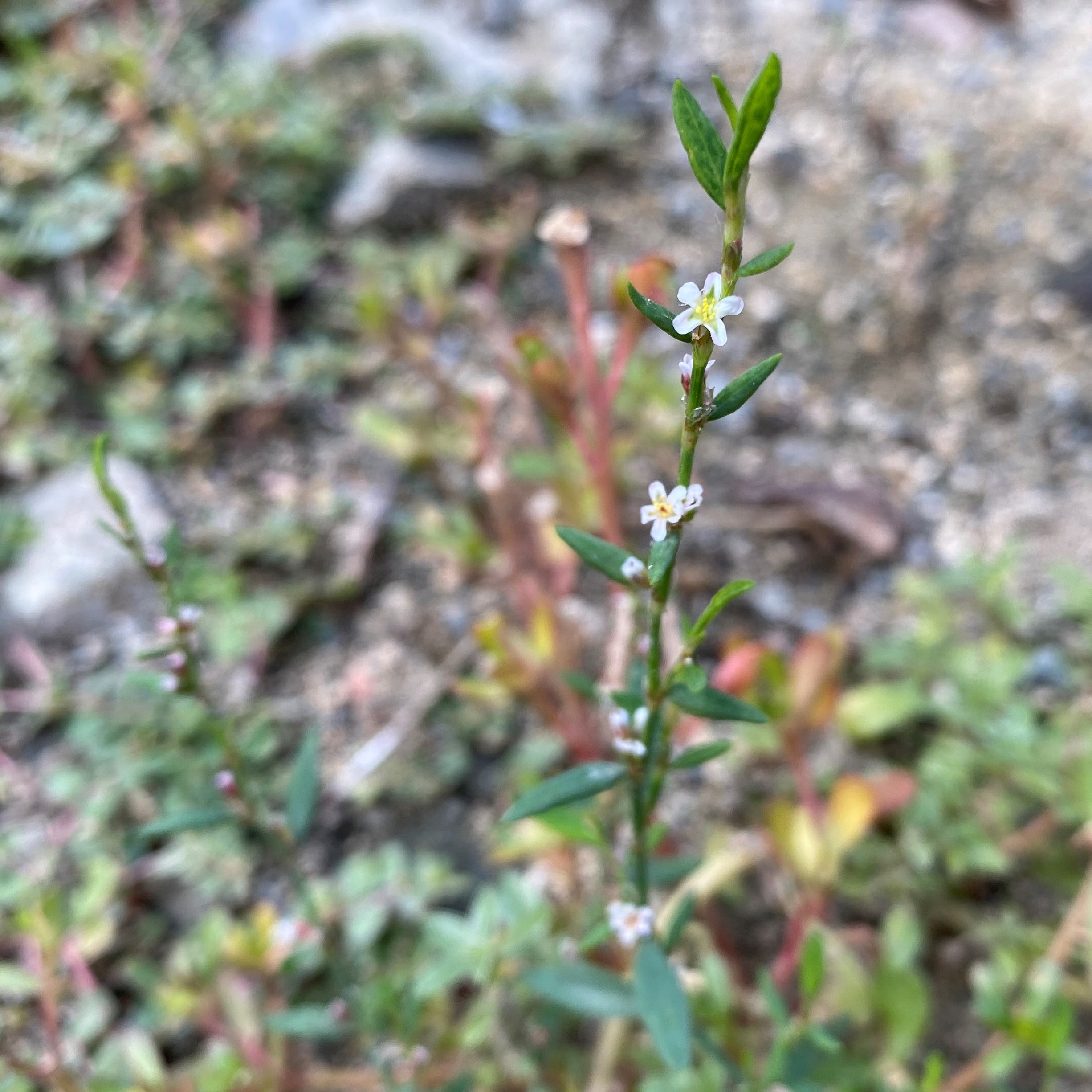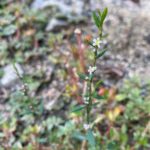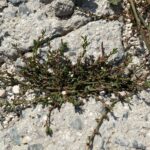Πολύγωνο των μικρών πουλιών
Etymology of Polygonum aviculare
The name of the genus, "Polygonum" derives from the Ancient Greek compound word "πολύγονο" [polygono] meaning "polygonal", from "πολύ" [poly], meaning "many" and "γόνυ" [gony], meaning "knee" (forming an angle), because of the jointed stems forming many "knees". The epithet "aviculare" means "related to the small birds", referring to the seeds being eaten by small birds; it derives from the Latin "avicula", which means "small bird".
There are at least 4 Polygonum taxa in the wild Cypriot habitat.
Polygonum aviculare appears all around Cyprus except for the Karpasia peninsula and central-southern Cyprus up to an altitude of 1575 metres. It primarily grows in disturbed habitats. Its flowering period is between April and October.
Key morphological characteristics of Polygonum aviculare
Polygonum aviculare, commonly known as knotgrass or prostrate knotweed, is predominantly an annual herbaceous plant, though it can sometimes be biennial or even perennial in certain conditions. Its most striking feature is its prostrate or decumbent growth habit, forming dense mats that branch out from a central point. The stems are typically slender and can range from a few inches to several feet long. The leaves are generally small, alternate, oblong to lanceolate, and often have a blue-green hue. A key distinguishing feature of P. aviculare lies in its inflorescences: the flowers are typically solitary or in small axillary clusters (meaning they grow in the angle between the leaf and the stem). The bracts subtending these flowers are leaf-like and usually longer than the flowers themselves, contributing to a "leafy" appearance of the inflorescence. It is known for its ability to tolerate trampling and poor soils. Its seeds are a significant food source for small birds, hence the "aviculare" epithet.
How to recognize Polygonum aviculare among the other species in Cyprus
Polygonum aviculare has leafy inflorescences with solitary or small axillary flower clusters and leaf-like bracts longer than the flowers. P. equisetiforme and P. patulum both have spiciform (spike-like) inflorescences that are not leafy, but P. equisetiforme's are terminal and slender, while P. patulum's are aggregated cymes with inconspicuous upper bracts. P. maritimum is found on the beach.




